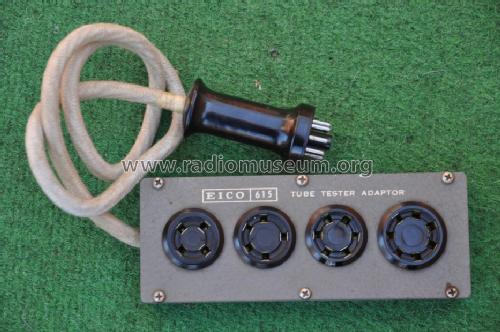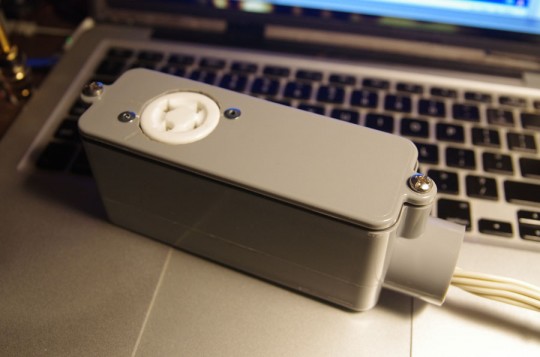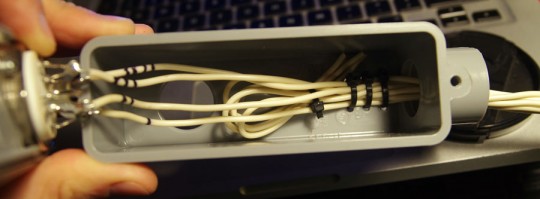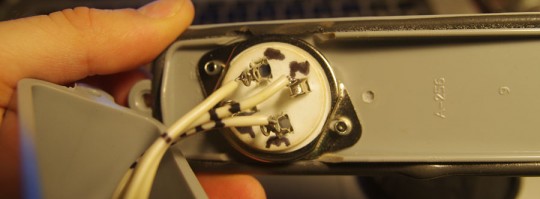This is a quick one.
I’ve recently been looking into playing with directly heated triode single-ended triode (DHT SET) amps, particularly 45s, 2A3s, and their cousin, the 6B4. So I’ve been buying them piece by piece on eBay, as inexpensive parts pop up here and there. The upside is the low low price! The downside is that my ‘modern’ Eico 667 tester doesn’t have the old UX4 socket. Eico did make an adaptor, however–the 615:

It isn’t a terribly easy thing to come by these days, nor cheap when you can find one.
So, what can I do? Make one! Another tube I’ve been looking at playing with is the 807, which needs a five pin socket that my 667 doesn’t have.
Luckily enough, an ‘octal extension cord,’ for lack of a better term, was being thrown out (along with a Tektronix logic analyzer, but that’s for another post). I brought the cable home and went to see what enclosures I might have on hand for this project. Turning up empty, I made a trip to The Home Depot and picked up a weather-proofed junction box that seems like it would fit the bill.
Measuring the socket, I needed a 1-1/4″ hole saw. Not having one on hand, I used the next smallest size I did have, a 1″. With a round awl, my rotary tool, and a hack saw, I set to work. First I took the lid off the box and marked it up with my calipers to mark the location of the socket, I drilled it out, roughed the hole open with the awl, and finished it off with the rotary tool and a wire wheel. Then I cut the pipe end off the back with the saw and added a few more 1/8″ holes for cable retention.
I dressed the male end of the cable with zip ties and heat shrink for a grip, as well as binding the wires with a few zip ties to keep them bundled.
I sadly have no photos of the build while it was happening.
Final product turned out great, I think, and there’s still plenty of room for activities!




That’s all for now. I’m working on a couple bigger posts right now and hopefully one of them will see the light of day in the next week or two.
 About
About
One comment